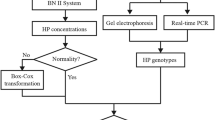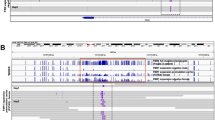Abstract
WITH the demonstration that random population pairs and dizygotic twins show greater intra-pair variability than monozygotic twins in serum haptoglobin (Hp) level, evidence for the genetic regulation of this protein has been presented1. This work also demonstrated that the normal values for haptoglobin phenotypes Hp 2–2 and Hp 2–1 are lower than those for Hp 1–1. If these differences are genetically determined, a similar mechanism involving the Hp 2 allele may be operative in a benign, genetically determined deficiency of serum haptoglobin2–4. A family of Dominican descent in which nine members drawn from two generations had haptoglobin-levels ranging from 6 to 52 mg/100 ml. and Hp 2–1 and Hp 2–2 phenotypes has also been reported5. On the basis of the available pedigrees, inheritance of this trait via a recessive haptoglobin allele (Hp°) or a simple non-allelic dominant has been excluded. Although so far all Caucasians with hypohaptoglobinæmia have been, when typable, phenotypically Hp 2–1 or Hp 2–2, a strong association between the Hp 2m–1 phenotype and haptoglobin depression exists in the American Negro6. We have studied an American Negro family, containing a pair of monozygotic twins in which hypohaptoglobinæmia unrelated to hæmolysis existed throughout an entire generation of offspring.
This is a preview of subscription content, access via your institution
Access options
Subscribe to this journal
Receive 51 print issues and online access
$199.00 per year
only $3.90 per issue
Buy this article
- Purchase on SpringerLink
- Instant access to full article PDF
Prices may be subject to local taxes which are calculated during checkout
Similar content being viewed by others
References
Bayani-Sioson, P. S., Louch, J., Sutton, H. E., Neel, J. V., Horne, S. L., and Gershowitz, H., Amer. J. Hum. Genet, 14, 210 (1962).
Galatius-Jensen, F., Acta Genet, 8, 248 (1958).
Harris, H., Robson, E. B., and Siniscalco, M., Ciba Found. Biochem. Human Genetics, 151 (Little, Brown and Co., 1959).
Sutton, H. E., Neel, J. V., Livingston, F. B., Binson, G., Kunstadter, P., and Thrombley, L. E., Ann. Hum. Genet., 23, 175 (1959).
Gottlieb, A. J., Wisch, N., and Ross, J., Blood, 21, 129 (1963).
Giblett, E. R., Steinberg, A. R., Amer. J. Hum. Genet., 12, 160 (1960).
Connell, G. E., and Smithies, O., Biochem. J., 72, 115 (1959).
Smithies, O., Biochem. J., 71, 585 (1959).
Gottlieb, A. J., Ross, J., and Conowitz, M. (submitted for publication).
Author information
Authors and Affiliations
Rights and permissions
About this article
Cite this article
GOTTLIEB, A., ROSS, J., GREENBERG, M. et al. Hypohaptoglobinæmia in an American Negro Family. Nature 197, 1214–1215 (1963). https://doi.org/10.1038/1971214a0
Issue date:
DOI: https://doi.org/10.1038/1971214a0



